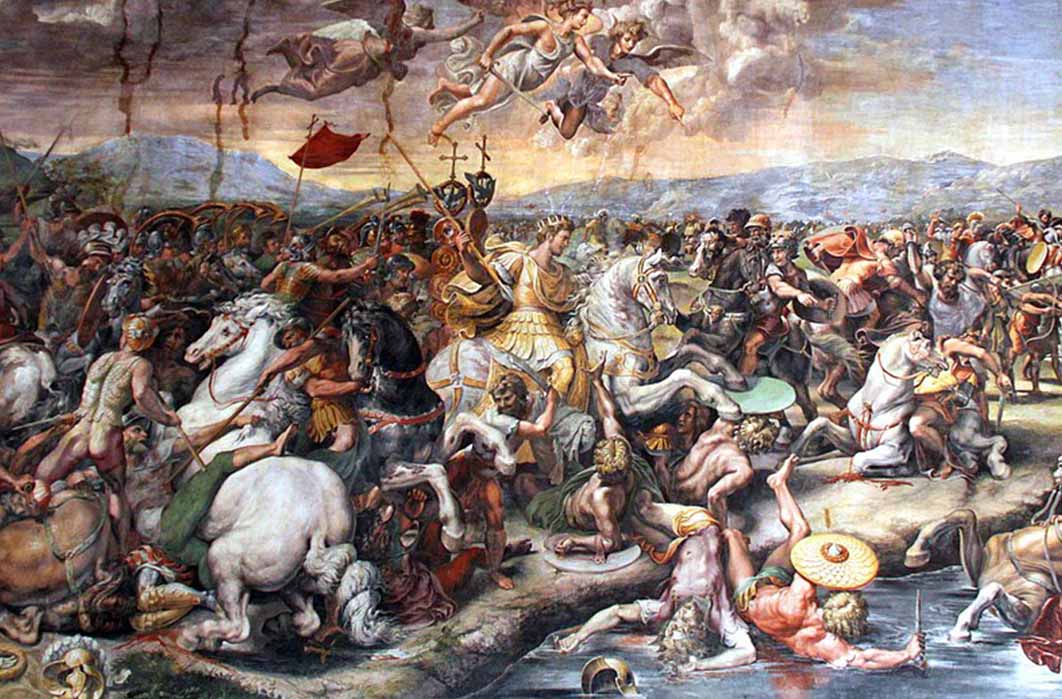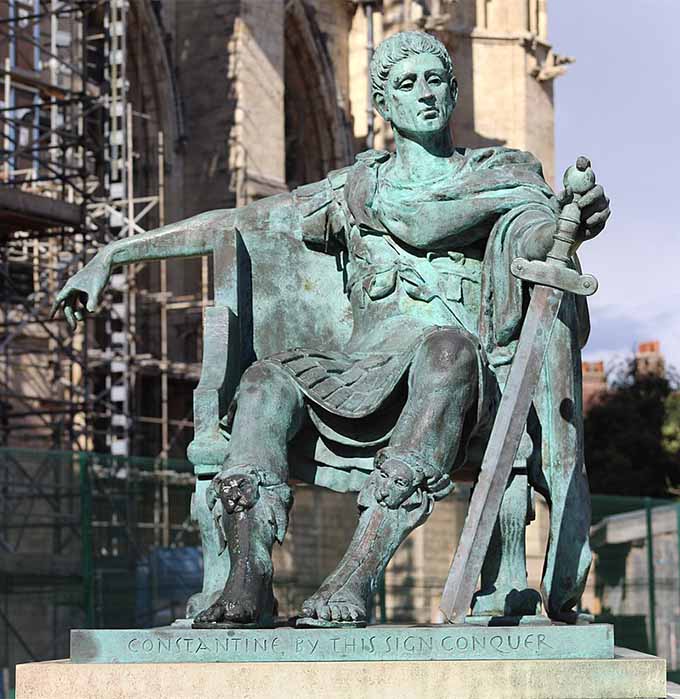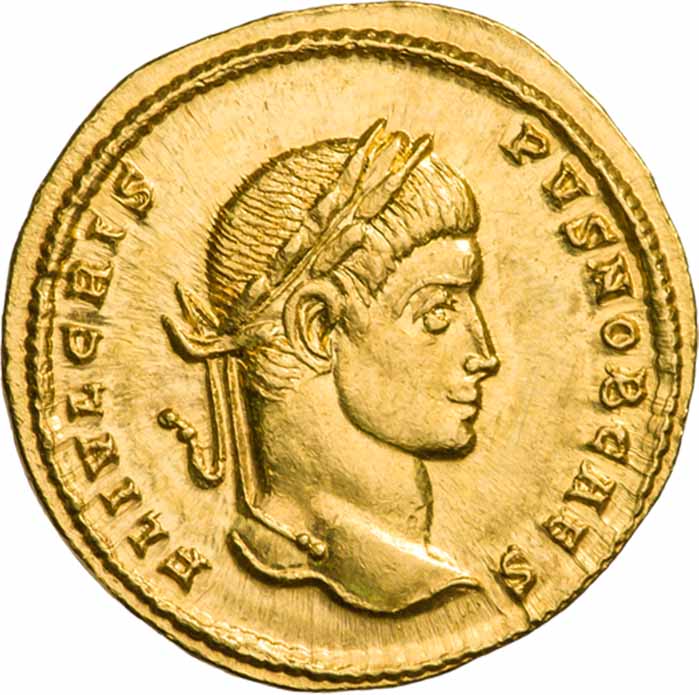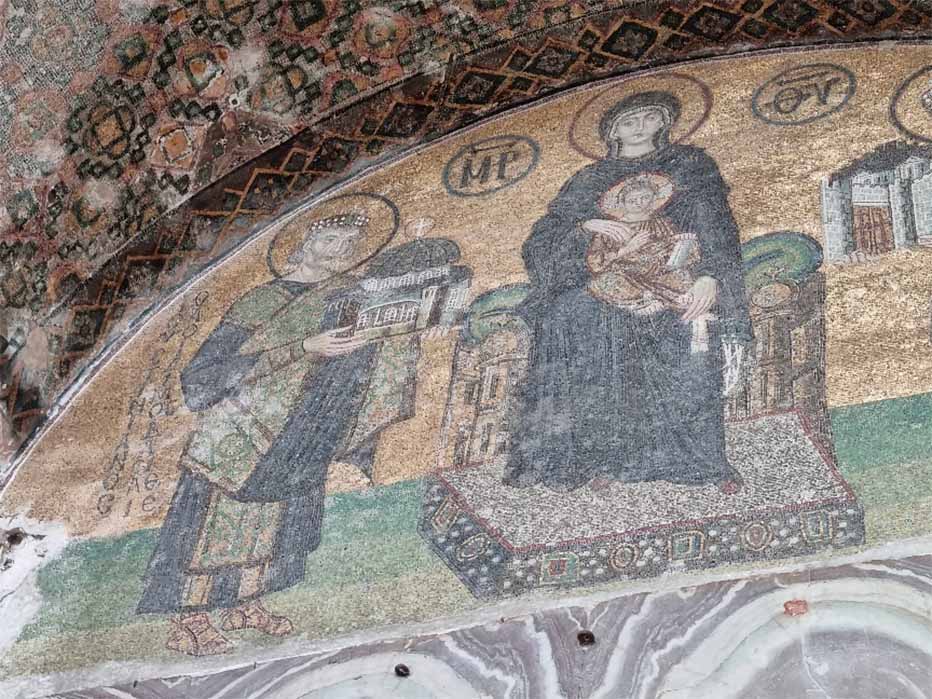
The Constantinian Dynasty - Five Successors, One Victorious Emperor
The Tetrarchy, inaugurated in 285 AD by Emperor Diocletian, had been instituted mainly with the intent of mitigating successions tribulations such as those that had plagued the third century. But the system began to breakdown in 306 when Emperor Constantius Chlorus died in Eboracum (York, UK) and the army serving under him illegitimately designated his son Constantine I as his successor. The latter emerged, 19 years later, as the last man standing following a series of deadly rivalries between several determined candidates to the purple cloak. By then, the well envisioned experiment of the Tetrarchy had become a distant memory and Constantine I ruled the Empire as sole emperor from 325 until his death in 337.
During this crucial 12-year period, important administrative reforms were undertaken, and the Roman army experienced a major reorganization in its structure and composition. As the Empire was recovering its former military might, Christianity officially became the state religion.

Modern bronze statue of Constantine I in York, England, near the spot where he was proclaimed Augustus in 306 (Chabe01 / CC BY-SA 4.0)
Constanine’s Reforms
The last period of Constantine I’s reign was far from being inactive. In the military field, the concept of the mobile army initiated by Emperor Gallienus 60 years earlier was finally instituted. Part of the frontier troops were permanently grouped into mobile units stationed in strategic locations within the Empire. The long-term effects of this reorganization for the defence of the Empire are not unanimous among modern historians; but most agree that in the short-term it was very useful for Constantine I during the military campaigns that followed against the Barbarians. In fact, in 328, the Emperor inflicted a severe defeat on the Alemanni on the Rhine and then carried out a large-scale victorious campaign against the Goths on the Danube. In 334, he massively attacked the Sarmatians and temporarily brought back under Roman control most of Dacia (modern Romania), evacuated by Emperor Aurelian in 275.
Although proven a good military leader, Constantine I was not as capable as an administrator, but he had the wisdom to surround himself with competent and loyal advisors who ruled the Empire with and through him. Under Constantine I, within the now theocratic State, imperial protocol was heightened, and the centralization of power was further accentuated. In 330, Byzantium, which the Emperor adorned with numerous picturesque buildings was renamed Constantinople, or City of Constantine (modern Istanbul, Turkey). The city became the new Christian capital of the Roman Empire and would remain so for another millennia. It thus took on the torch from the thousand-year-old pagan Rome, which ultimately lost its pre-eminence. Even the Praetorian Guard in Rome, an institution founded by Augustus more than three centuries before, was disbanded and replaced. There was, however, an obscure side to the picture. Constantine I’s wars and numerous architectural achievements were expensive. In spite of a financial reorganization, the imperial administration raised taxes significantly.
Mosaic of Emperor Constantine holding a model of the city of Constantinople in the Hagia Sophia (Image: Courtesy Micki Pistorius)
Winning the Favor of Christians
Without openly condemning the pagan religion, Constantine I continuously worked to win the favour of the Christians by building churches and establishing ‘moral’ laws. The Emperor also intervened directly in the affairs of the Church. Perhaps the most obvious example was the convening of the Council of Nicaea (Iznik, Turkey) in 325. No sooner had his last opponent, Emperor Licinius, been removed from the political scene, than Constantine I having had to deal with a religious crisis. Since the doctrine of the new religion was not yet officially established, there were different dogmatic Christian interpretations circulating, including Arianism. This dogmatic interpretation, which in short opposed the concept of the Trinity in the representation of the unique god of Christianity, was widespread in the eastern part of the Empire. Confrontations and sometimes destructive passions were unleashed in several major cities of the Empire. Constantine I mandated the council, more to safeguard public order than out of spiritual conviction. He brought together the various religious authorities of the time to define the dogmatic bases of Christianity and to attempt eliminating interpretations deemed deviant.

Solidus of Crispus (International Numismatic Club / CC BY-SA 4.0)





